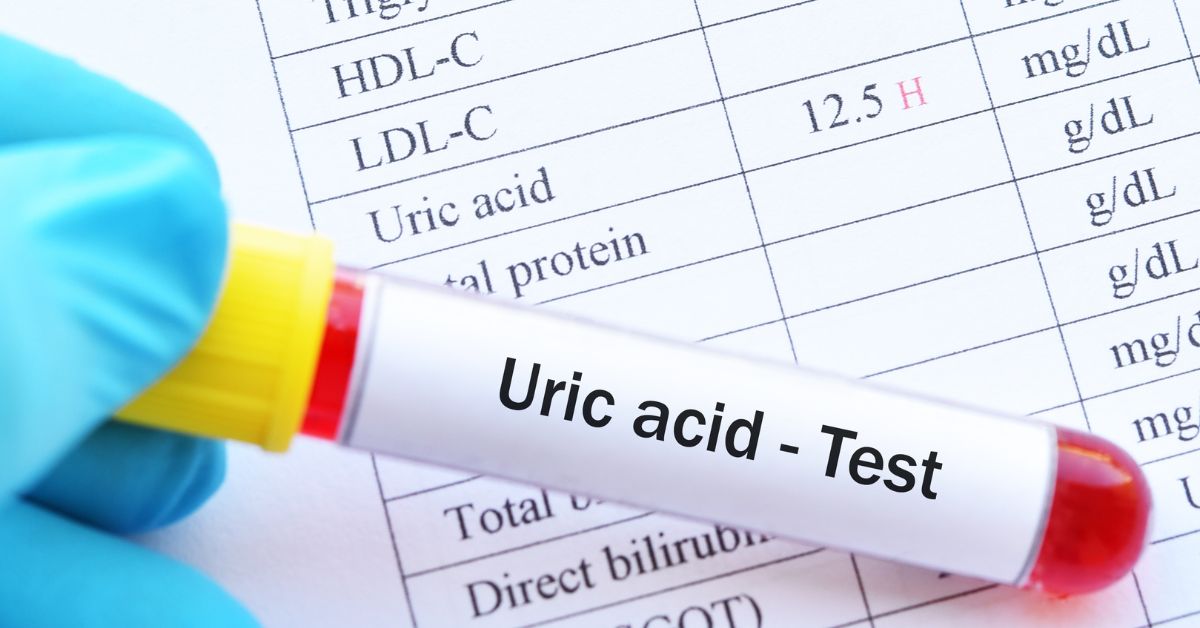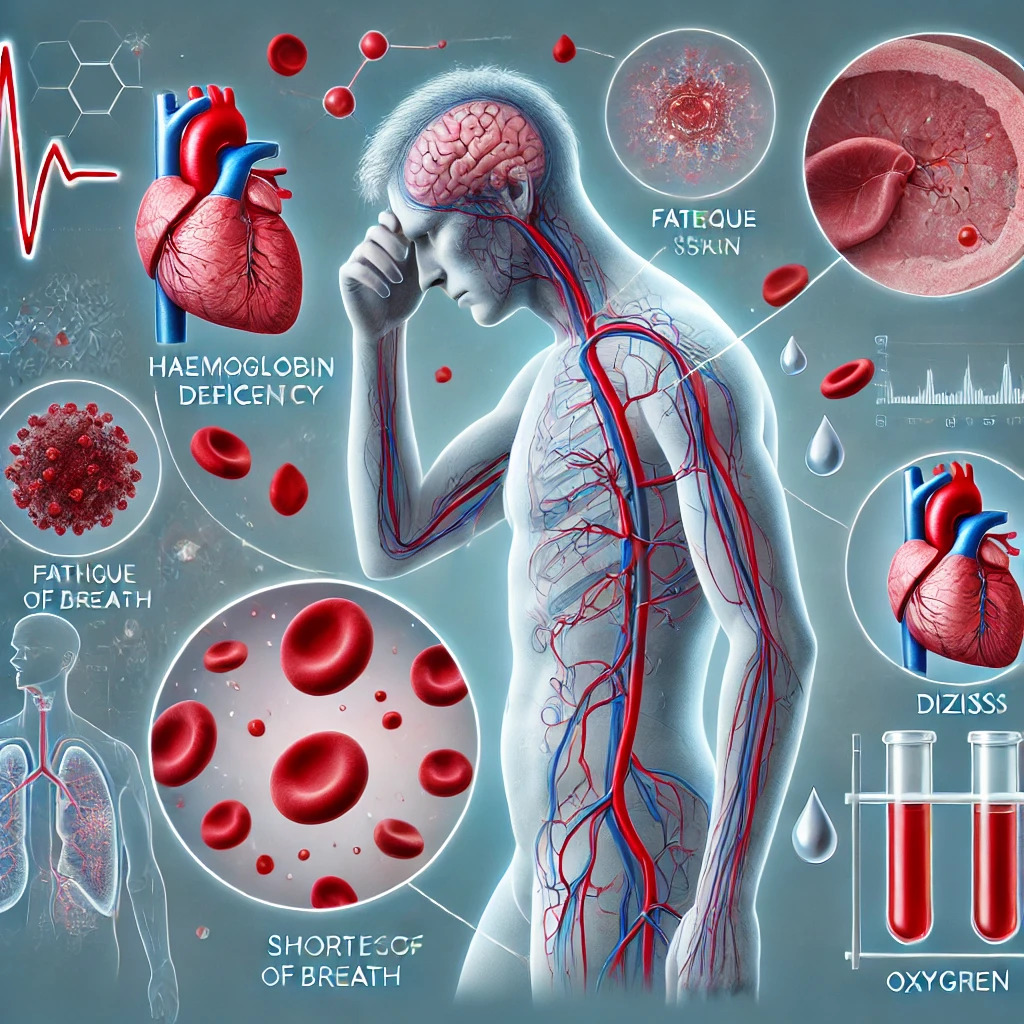Difference Between Urea and Uric Acid in Blood Tests

Doctors frequently advise blood tests for urea and uric acid. When going for these tests, many people get confused between urea and uric acid, which are not the same compounds. Urea and uric acid are nitrogenous waste products in the body that are formed as a result of protein metabolism and purine metabolism, respectively. Their formation and removal play essential roles in maintaining bodily functions. Understanding the difference between urea and uric acid in the human body is necessary to comprehend how their abnormal levels can impact health.
Difference Between Urea and Uric Acid in Blood Tests
The similarity between these compounds is that they are both nitrogenous waste products in the body and must be regulated and excreted as waste products. There are differences between uric acid and urea in their formation and the problems they can create when not removed adequately.
This blog explains what urea and uric acid are, how they are tested, the average values, and how their insufficient removal can create health issues. This information will help you understand the need for related blood tests when you need to see a doctor and enable you to approach your health proactively.
Also Read: - which dal is good for uric acid
What is Urea?
A blood urea nitrogen test is generally prescribed when a doctor wants to test your urea levels. This test will measure the amount of urea nitrogen in the patient's blood.
So, what is blood urea nitrogen, and why does it get tested?
As we discussed earlier, urea is a waste product of protein metabolism. Urea nitrogen is produced when the liver breaks down the protein, which must be cleared from the body. The process happens as part of the urea cycle, where the ammonia is broken down into urea. Ammonia is more toxic to the body, while urea is less toxic and more accessible to excrete. This urea nitrogen is carried from the liver to the blood and then to the kidneys, which filter it out of the body through urine.
The problem with removing urea can occur mainly at two levels. One is when the liver is not working well, and it does not break down the proteins as it should normally. The second is when the kidneys are not functioning well and don't filter out the area properly. If any of these problems are present, sufficient amounts of urea are not removed from the body, and large amounts of urea nitrogen start building up in the body, which can cause problems.
If your doctor suspects a kidney issue, wants to see how well your kidneys are working or intends to assess the effectiveness of the treatment for kidney issues, you may be tested for BUN levels. This test is generally used along with other tests to evaluate kidney health.
Also Read:- best homeopathic medicine for acidity and gas
Who needs to be tested for blood urea nitrogen?
Now that you know the difference between blood urea nitrogen and uric acid and what urea is, you should know why a blood urea nitrogen test is done.
You may need this test:
- To rule out or diagnose kidney problems, if you have symptoms like:
- Increased frequency of urination or decreased need to urinate
- Muscle cramps
- Joint or bone pain
- Restless legs
- Unexplained fatigue
- Itchiness
- Swelling in the arms or legs
- As part of a regular health checkup
- You are already diagnosed with this condition, and the doctor wants to monitor your condition, the efficacy of treatment, or whether you need dialysis
- When you are sick from some other illness
You may be advised other tests alongside BUN, like uric acid, creatinine levels, complete renal function tests, and other blood and urine tests. Imaging tests may also be advised. You may also have to keep a record of your blood pressure.
Interpreting the values of blood urea nitrogen
Test results for BUN can vary based on factors like age, gender, health status, etc. There may be some variations in the values and normal ranges based on the lab used. A doctor is the best person to interpret your results for these tests.
The normal range for blood urea nitrogen is between 7 and 20 mg/dL. Most healthcare professionals consider the BUN-to-creatinine ratio a better measure of kidney health. The average ratio is typically between 10:1 and 20:1. A ratio higher or lower than these values signals some problem.
The things or factors that might affect the test results for BUN include:
- A high-protein diet
- Use of steroids
- Dehydration
- Burn injuries
- Ageing
What is Uric Acid?
From the discussion at the beginning about the difference between urea and uric acid in the human body, it is clear that uric acid is also a waste product from protein metabolism. This substance is formed when purines are broken down. Purines are natural substances that may come from food or be formed in the body when DNA is broken down.
Purines are nitrogen-containing compounds broken down in the liver to form uric acid via a multistep process, the final product of purine catabolism or breakdown. It is then transported to the kidneys and removed from the body through urine. A small amount of uric acid may also be excreted through the intestine. Uric acid must be adequately excreted because its accumulation can lead to hyperuricemia. This can cause Gout.
Although uric acid is a waste product, many people don't know the exciting role this substance plays in antioxidant defence in the human body. It works to scavenge free radicals as it can directly react with and neutralise some reactive oxygen species. It can prevent metals like iron and copper from participating in harmful oxidative reactions in the human body by binding to these metals. It can inhibit lipid peroxidation. It can preserve nitric oxide levels and thus support vasodilation and optimal endothelial function.
Uric acid also has anti-inflammatory effects. A proper balance between maintaining its normal levels and excreting it is essential.
Many things can cause uric acid levels to rise, like a diet high in purines, foods and drinks high in fructose, genetic predisposition, obesity, kidney disease, metabolic syndrome, diabetes, hypothyroidism, certain medications like diuretics and immunosuppressants like cyclosporine, drinking alcohol, dehydration, crash diets, etc. High uric acid can cause gout, kidney stones, and other health issues.
Who needs to be tested for uric acid levels?
You or someone you know may need to be tested for uric acid when:
- You have symptoms of gout, like:
- Joint pain or tenderness
- Swelling and pain in a joint, mainly the big toe, ankle, or knee
- Signs of inflammation like red, painful, swollen joints that are hot to the touch
- Skin around a joint that looks shiny and inflamed
- You have symptoms of kidney stones, like:
- Severe pain along the lower back, which may radiate to the front and the groin
- Low backache accompanied by nausea and vomiting
- Urgency to urinate
- Blood in urine
- Cloudy urine
- Visibly passing a stone
- If you are already diagnosed with a kidney condition
Please note that hyperuricemia may not always lead to symptoms. You may be advised to do other blood tests, like CBC, renal function tests, urinalysis, ultrasound of the abdomen, and joint fluid aspiration and testing.
Interpreting the value of uric acid
Like most other tests, many factors can impact the results, like age, gender, health history, and other things like the testing lab. Understanding that a doctor is the best person to interpret your uric acid test results based on your health status and history is essential.
These are the normal ranges:
Men: 3.4 to 7 mg/dL
Women: 2.4 to 6 mg/dL
Levels above 6 mg/dL for females and above 7 mg/dL for males mean higher uric acid in the blood.
Your uric acid levels may be impacted by:
- Certain medications like aspirin, levodopa, diuretics, etc.
- Vigorous exercise
- Treatment for cancer, like chemotherapy or radiotherapy
High Levels of Urea, Creatinine, and Uric Acid
When levels of urea, creatinine, and uric acid are high in the blood, it can indicate various underlying health conditions primarily linked to kidney function and metabolic processes.
Elevated BUN can result from kidney disease, dehydration, high protein consumption, heart failure, or shock, amongst other things. Liver problems generally lead to lower BUN levels due to a reduced capacity to produce urea from ammonia. Elevated BUN levels are seen in some liver issues like portal hypertension and hepatorenal syndrome.
Creatinine levels are a reliable indicator of kidney function. Creatinine levels will be elevated with chronic kidney disease, acute kidney injury, dehydration, severe muscle injury, and high muscle mass, amongst other things. Creatinine levels may be low in cases of low muscle mass, like muscular dystrophy, muscle wasting due to ageing or other causes, low protein intake, severe liver disease, pregnancy, end-stage kidney disease, certain medicines that interfere with creatinine production, and age.
Elevated uric acid levels are seen with genetic predisposition and high consumption of purine-rich foods, foods and drinks sweetened with fructose, Gout, kidney disease, metabolic syndrome, hypothyroidism, certain cancers, cancer treatment, and some medications like diuretics and aspirin. Low uric acid levels are less common but may be seen with genetic disorders, liver disease, malnutrition, Wilson's disease, and medicines like allopurinol, where low levels are desired.
Conclusion
To summarise, urea (also called urea nitrogen or blood urea nitrogen) and uric acid are produced in the liver and mainly excreted via the kidneys. However, there is a difference between urea and uric acid, as they originate from different metabolic processes and pathways.
Their levels can be affected by liver and kidney problems. Production and excretion of urea from the body are crucial for maintaining nitrogen balance and preventing ammonia toxicity. Uric acid is a waste product of purine metabolism and plays a role in antioxidant defence. Regular monitoring is essential for monitoring kidney function and other health issues.
Through this blog, you have understood the similarities and differences between urea and uric acid in the blood, when these tests are needed, the average values of urea and uric acid, and how to interpret the results. If you have any health concerns, you must consult a doctor. Timely treatment can preserve kidney function, help manage kidney or liver disease, and improve the quality of life.
At O-Lab in Jammu, complete renal function tests are available. Blood and urine tests are also available to monitor different organs and body systems. You can also check out our health checkup packages. We offer the best services and accurate reporting at reasonable prices. Regular health checkups can make a difference between prevention and cure.





